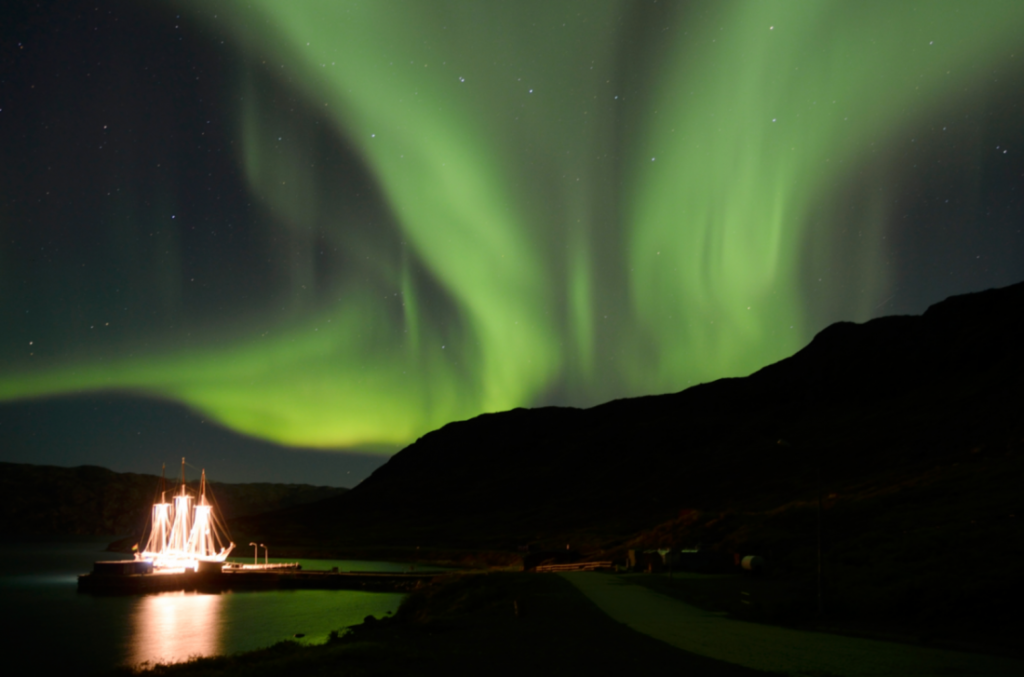There is currently a strong geomagnetic storm that has the potential to produce auroras as far south as Alabama and Northern California. Conditions have been recorded following solar eruptions in the G4 (severe) category.
As a result of the Sun’s eruptions, plasma was blasted toward Earth, causing a catastrophic geomagnetic storm that could create the Northern Lights on Monday as far south as Alabama and Northern California.
Following the detection of an X 1.1 solar flare and subsequently a coronal hole high-speed stream, or CH HSS, by Sun-observing satellites, NOAA’s Space Weather Prediction Center (SWPC) issued a Geomagnetic Storm Alert on Sunday.
The interaction between charged particles from the Sun and Earth’s atmosphere causes auroras, which are responsible for the Northern and Southern Lights.
Space specialists thought the first wave of energy may be categorized as a G1 or G2 on their five-point scale of geomagnetic storms, but on Monday it increased to a G3. On the other hand, the SWPC dashboard indicates that severe G4 space weather conditions were detected throughout the last day and are expected to persist.
The weakest geomagnetic storm, a G1, frequently produces Northern Lights displays across Alaska and Canada. If the sky are clear, an aurora may be visible as far south as Washington, Wisconsin, and New York with a G3 grade. Southern Alabama and northern California may be able to see displays of the Northern Lights due to G4 (level 4 out of 5) conditions that have been detected and predicted through Monday.
IMPORTANT INFORMATION ABOUT THE NORTHERN LIGHTS
Ground-based magnetometers also track the level of geomagnetic activity, and the event is quantified on the Kp index scale, which goes from 0 to 9.
In December, observations of the Northern Lights were made as far south as Las Vegas due to a G3 event with a high Kp-index value. According to space specialists, the event might occur and reach a Kp-index value of at least 6, putting cities in the visibility zone, including Syracuse, New York; Seattle; Minneapolis; and Green Bay.
Through Monday night, the University of Alaska Fairbanks Geophysical Institute is predicting high aurora activity with Kp-6 levels.
The public should visit our webpage to stay up to date on storm progression and avoid anticipating negative effects, the SWPC stated on Sunday. No action is required.
The Forecast Center predicts a lot of obstructions in the sky on Sunday and Monday nights that may make viewing difficult.
The nation’s heartland will be seeing a large storm system that will bring with it lots of snow and thunderstorms.
The Worm Moon in March will be full, causing more clouds to obscure the sky and making it harder to see other celestial objects.
On Monday, just before 1 a.m. EDT, there will be a partial lunar eclipse, during which the Moon will pass through Earth’s shadow and last until roughly 5:30 a.m
Compared to initial predictions, NOAA predicts a stronger peak of solar activity in 2024.
Even with more regular occurrences, space researchers acknowledge that pinpointing the precise strength of geomagnetic activity remains difficult.
As the Sun moves closer to its maximum phase of the solar cycle, the frequency of geomagnetic storms has increased over the past year.
Every eleven years, the Sun’s magnetic field reverses during a period known as a solar cycle. 2019 saw the start of Solar Cycle 25, which might run until 2030.



